 Facebook
Facebook
 X
X
 Instagram
Instagram
 TikTok
TikTok
 Youtube
Youtube
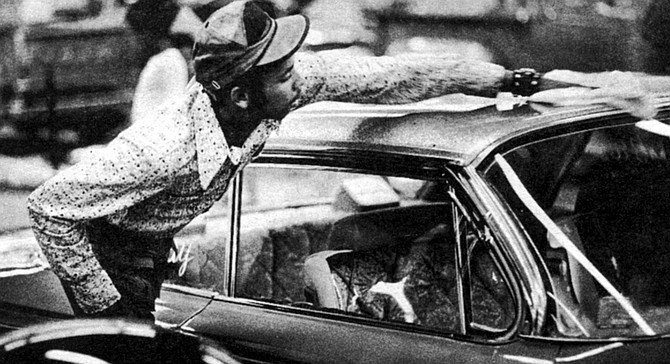
by Albert Barret
Rod and Custom Show. You can really flash on the name. If you are older than twenty, it brings up images of what went on at the shows and on the streets in the earlier days of Custom. You remember the Barris creations, the sleek chopped and lowered ’49 to ’51 Mercs that looked like they had been dipped in oil and were accompanied by a proud owner showing the car’s ground clearance with a pack of Luckies. Early model Fords: ’34’s and ’32’s (remember the Beach Boys’ “Little Deuce Coupe”?) Even Model A’s and Model T’s were standard fare and always comprised the biggest part of the shows.
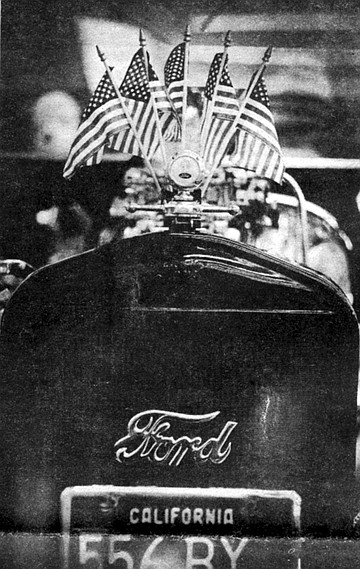
Therefore, when you’re an older aficionado planning to attend a custom show, you anticipate returning to a bedrock of our culture, a real treat in a world with books like Future Shock. But hold on-the rod and custom shows have changed too. Certainly, if you take a serious look:
1. BIKES
Why all the interest in the bikes? Tom Wolfe theorized that the chopper has replaced the early model Ford as the favorite medium for the customizer. One look around the San Diego show last week-end confirmed this theory; bikes were everywhere. Once past the foyer, you had to really search to find the early model Fords, variations of which used to appear at shows over and over. Two model T roadsters in the entrance way, two '32’s and a five-window '34 coupe were all that remained. It makes you a little sad when you recall that California with its new 1400-pound-no-fenders law was the birthplace of the street roadster. The big revival of the Ford roadsters that the car mags talk about was nowhere to be found at this show.
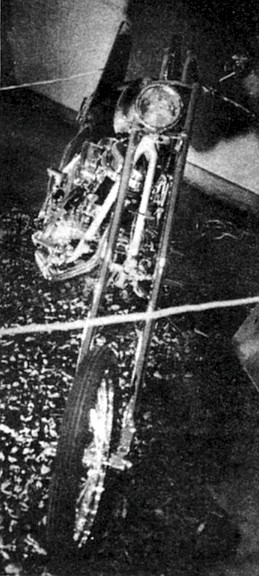
In many ways the bikes are as similar to each other as the Fords used to be. Maybe this is because most of the show bikes originally came out of the same factory in Milwaukee. In any case, the real individualism comes with the types of cylinder heads: the Pan Head, the Knuckle Head, the Shovel Head, the Flat Head. Most of the bikes have gone the standard chopper route, reducing the ponderous Electra-Glide to a trim street machine with awesome straight-line capabilities. Oversized rear tire on a 16-inch rim, “hardtail’ solid rear suspension, little seat, molded frame and tank, raked and extended forks, tiny front wheel way out front, and no front brake.
Every time you see a chopper you wonder if form is following function or function following form. Ask a biker and he’ll tell you that all the modifications make the chopper “a real highway performer.” Well, you sure don’t see them in the dirt. But the whole bike phenomenon is probably better explained in terms of role playing. Prior to the nineteen sixties, the motorcycle rider was a rough-tough-rake-hell person with apparently no concern for safety. Then came the light-weight Japanese motorcycle and Honda’s slick Madison Avenue-ism, “You meet the nicest people on the Honda." Overnight, Suzuki, Honda, Yamaha and Kawasaki sold millions of bikes to nice people. The motorcycle became a respectable mode of transportation. But who wanted to be a “nice” person? The 1950’s biker didn’t. And his answer was the chopper, with its extended forks, huge engine, and rakish seating posture.
At the show, the next stage seemed to be raising its head: the trike. Take a VW or Porsche engine and transaxle and bolt on extended forks and you have-terror on three wheels. The signs at the trike exhibits explained that the vehicles are “streetable”, can be “ordered in kit form or complete.” How they perform is questionable, especially in light of all the handling problems of the VW transaxle mounted under something relatively stable like the Bug. It's a safe guess that Ralph Nader would have to be bound and gagged before he set foot on a trike.
2. LO- RIDERS
Another big change in the Rod and Custom scene is the coming of the Lo-Rider, seventies style. (Or, how come there are so many Rivieras in here?) The ideal Lo-Rider is a middle sixties Riviera owned by a proud, young black or brown male. Typically, long, hard hours of work have transformed the vehicle into a rolling pleasure palace. Multi-colored shag carpets, televisions, tiny steering wheel, tufted, buttoned and brocaded upholstery (“384 buttons/ All Folded/ No Stitching”), three or four inches of clearance from the ground. And the wide or “pimp" whitewalls are making a comeback, respectable, too; check this month's Car and Driver. The paint is usually some type of pearlescent or metal flake. With the colored lights set at different angles shining on the car and with the base of angel hair, the. Lo-Rider displays almost make you feel religious.
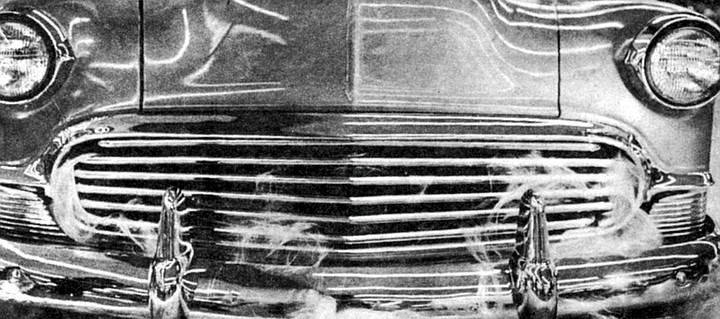
3. FORD F-100 TRUCKS FROM 1953-1956
The auto magazines have been claiming a revival in the 1953-1956 Ford pick-up, and the San Diego show was confirmation of the claim. There must have been at least twenty on the floor. Why the interest in these trucks?
The magazines can’t explain it clearly. Owners give you answers like, “It’s gotta real good cab.” or “. . . the last year pick-ups looked like trucks,” or “Don’t ask me; just take them for what they are, trucks and good lookin’."
4. BACK-TO-NATURE
There were even traces of today's return to the outdoors movement laced in the fabric of the show. First there was a representation of the Desert Racer-Sand Rail element. A single-seat Desert Racer with a Mazda engine was probably one of the most innovative creations in the show. A lack of explanatory signs, however, kept the knowledge of the power plant a secret to the casual observer. As you’d expect, all the desert stuff was VW-powered except for the Mazda and an interesting Renault Sandrail. Secondly, a number of exhibitions had chosen not to use the customary angel hair or white sand as the floor covering around their creation. Instead, they had spread out a two-inch layer of redwood chips, the kind you can see surrounding the trees and bushes of of every Southern California apartment complex.
There are some things at the Rod and Custom shows that will never change. Like the immense amount of work in man-hours it takes to prepare each car. It’s almost as if man-hours were the real measure of a customized car, each exhibitor very willing to tell you about the long hours he has put into his car. One 1941 Willys Gasser had a sign on the windshield, “I made my dream my goal, and my goal a reality.” (A look at the engine through the wheel-well, however, revealed only the bare block on the chassis.) Maybe not quite “a reality” in this case, but a nice show car and an indication
by Kevin Mallory
Well, Tom Wolfe compared it to 19th Century European architecture, I think to myself. It just seems so ironic to have the Custom Car and Bike Show here at the Community Concourse. The surface of the Concourse itself looks newly waxed, but that must have been for the Symphony’s opening night with Van Cliburn next door. As we walk under the door sign “Admission $3.50,” I notice three people looking our way. They’re standing next to two customized bicycles on display, anxiously hoping for a few people to be distracted from the more popular car and motorcycle sections. Yeah, Wolfe was right, look at that blue angel hair around the base of the bicycle. I stare intently, trying to figure out what the norms would be for bicycle customizing. The chrome’s pretty shiny, the metallic paint looks nice...
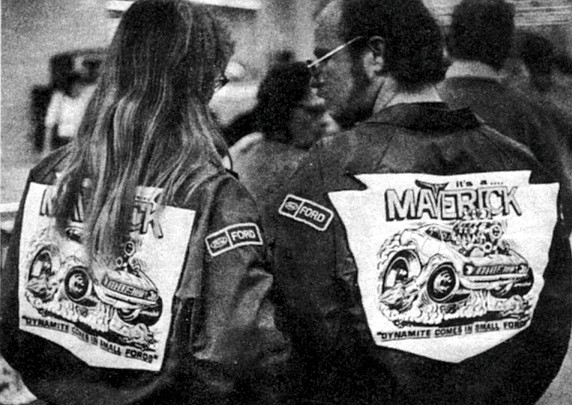
“I’m gonna win,” a dark kid named Dwayne Warner confides in my ears. “It’s D-W-A-Y-N-E, and uh would you send me copies of the paper with my name in it?” Before I have a chance to equivocate, a short, fat man with glasses and a gray handlebar moustache assaults me: “Look at that, mister. Would you believe it my eleven year-old kid did it.” The man drags me over to the display next to Dwayne’s. “Look at that; every part is a Schwinn part, every part.” He kept repeating that.
What interested me was the furry gray banana seat: “Rabbit fur?” I ventured a guess. “That's pure rabbit fur. No synthetics. This here's my kid.” He put his ample hand on a tassel-haired kid's head. The kid, who looked like any kid, looked away disinterestedly, maybe embarrassed. I wondered to myself what his electric train set looked like.
Somewhat like your first visit to Disneyland, you don’t know where to go first. Of course there are the cars, but also the bikes, the bicycles and the model cars; the booths for the Army recruiters, the Marines, the Marijuana Initiative, Hobie Catamarans, Lafayette Radio, Hot Rod Magazine, and the plethora of auto parts dealers and car clubs and a Battle of the Bands. Finally I found the information booth and a girl in charge named Dee. She hadn’t heard of Tom Wolfe’s Kandy-Kolored Tangerine-Flake or the Reader, so I showed her a copy of the paper. “We have a paper like this in Hermosa Beach,’’ she said. She did seem to know something about customizing. She said the big thing now is the increase of motorcycle customizing. “When we have our shows in the L A. Sports Arena, the whole upper level is bikes. One-third of the people just come to see the upper level.” An organization girl. Dee gave me a capsule history of the business. “We’ve been putting on shows for twenty years. In the 1950’s it was strictly low-riders. Then we added dragsters, funny cars. Then boats, then bikes and then three-wheelers. This year we've got bicycles and model cars.”
How about commercialization of the scene? Wolfe was writing about that even in 1962.
“Well, at L A. we have sections of dealers who advertise.” She was speaking slowly and carefully, not really knowing what a company girl should say.
“Can I say something?” A man with a modified duck-tail and a moustache which ended below his jaw interjected. He was a member of the Mavericks, according to his jacket. He started talking excitedly, “You can’t be an amateur anymore. In the old days it was only lacquer jobs; now with spider webbing, metal flake, pearl paints ya’ gotta have fancy equipment, filters and everything. I had to drive my car here from El Cajon and I almost got in a fight last night with the guy who owns the job near the front door. I asked him how far he drove that thing and he almost hit me. People like him just build cars for show.”
How about drag racing, that gone too?
“That’s right. The cops have fast cars now. And radio telephones. You can’t beat a radio telephone; I don’t care who you are.”
Maybe because I don’t know much about cars, as 1 walked from the Information Booth into the showroom I was more taken with the variety of displays than with the vehicles. One of the first was a display surrounded by gold and white imitation Ancient Greek sculpture. Greek maidens holding flat bowls of cascading plastic red roses. As I backed away from this one, my attention was caught by a yellow truck with metallic gold flames called “Hepatitis.” Well, it is set in a bed of yellow angel hair, I mused. Next door a bike on a tin foil pedestal was rotating above a pleated foil sheet with rotating colored lights. And next to it was a three-wheeler on a fake grass pedestal: the real, natural look: autumn leaves carefully strewn along with pumpkins and other Halloween paraphernalia.
The people with their displays weren’t overly friendly, just sort of businesslike, like office receptionists, friendly enough to answer questions with a smile but no more. I was really fascinated with a pinkish-violet Lo-Rider with a three by five-foot Mexican flag behind it and a sign “Brown Image” in the rear window. The dash was overgrown with deep purple yam-hair and there were champagne bottles and glasses perfectly positioned between the seats. At the base of the car was the proverbial angel hair, punctuated with little dolls and sequinned styrofoam hearts and cupids. I got enough nerve up to ask the man of the obvious family-owners what his name was. “Sonny Valdiviezo,” he said. There seemed to be some doubt as to whether they were from “Logan Heights” or “San Diego.” Brown Image is only about five or six months old; there are about six other all-Chicano car clubs in the area. There’s Nosotros in National City, a couple in San Ysidro ... Not a lot more talkative were the Nomaders, a club brought together by a kind of Chevy station wagon. I originally sensed a real story, seeing the man and wife team at the table, “Did you happen to meet because each of you owned a Nomader?”
“Nope, he had one. We got married and then I got one,” the pleasant, plump girl with wire rims told me. “There’s about twenty of us in San Diego.” And they even knew the nonmember owners. My friend asked them about a certain Nomader seen around downtown.
“Yeah, we’ve seen it. We’re still trying to contact the owner. You know him?”
For some reason I sensed an atmosphere of listlessness hanging over the show that night. People walking from attraction to attraction were neither very bored nor especially sanguine about what they saw; just slightly entertained. The Battle of the Bands which started late in the evening was obviously supposed to stir things up: the organization girl Dee had been warning me anxiously, “Any minute now, any minute they’re going to start.” But when they did start no one did much more than sit in the rows of metal chairs in front of the stage and swing their feet back and forth. Teenage kids with uniformly long hair, the man from El Cajon with his Maverick-jacketed wife and daughter, swinging their feet to “Honky Tonk Woman.” None of the hully-gullying of ten or fifteen years ago. I wondered if the man from El Cajon had already forgotten about the near fight from the night before. And I wondered if the Mavericks and Nomaders everywhere had as much fun as hot-rodders years ago.


by Albert Barret
Rod and Custom Show. You can really flash on the name. If you are older than twenty, it brings up images of what went on at the shows and on the streets in the earlier days of Custom. You remember the Barris creations, the sleek chopped and lowered ’49 to ’51 Mercs that looked like they had been dipped in oil and were accompanied by a proud owner showing the car’s ground clearance with a pack of Luckies. Early model Fords: ’34’s and ’32’s (remember the Beach Boys’ “Little Deuce Coupe”?) Even Model A’s and Model T’s were standard fare and always comprised the biggest part of the shows.

Therefore, when you’re an older aficionado planning to attend a custom show, you anticipate returning to a bedrock of our culture, a real treat in a world with books like Future Shock. But hold on-the rod and custom shows have changed too. Certainly, if you take a serious look:
1. BIKES
Why all the interest in the bikes? Tom Wolfe theorized that the chopper has replaced the early model Ford as the favorite medium for the customizer. One look around the San Diego show last week-end confirmed this theory; bikes were everywhere. Once past the foyer, you had to really search to find the early model Fords, variations of which used to appear at shows over and over. Two model T roadsters in the entrance way, two '32’s and a five-window '34 coupe were all that remained. It makes you a little sad when you recall that California with its new 1400-pound-no-fenders law was the birthplace of the street roadster. The big revival of the Ford roadsters that the car mags talk about was nowhere to be found at this show.

In many ways the bikes are as similar to each other as the Fords used to be. Maybe this is because most of the show bikes originally came out of the same factory in Milwaukee. In any case, the real individualism comes with the types of cylinder heads: the Pan Head, the Knuckle Head, the Shovel Head, the Flat Head. Most of the bikes have gone the standard chopper route, reducing the ponderous Electra-Glide to a trim street machine with awesome straight-line capabilities. Oversized rear tire on a 16-inch rim, “hardtail’ solid rear suspension, little seat, molded frame and tank, raked and extended forks, tiny front wheel way out front, and no front brake.
Every time you see a chopper you wonder if form is following function or function following form. Ask a biker and he’ll tell you that all the modifications make the chopper “a real highway performer.” Well, you sure don’t see them in the dirt. But the whole bike phenomenon is probably better explained in terms of role playing. Prior to the nineteen sixties, the motorcycle rider was a rough-tough-rake-hell person with apparently no concern for safety. Then came the light-weight Japanese motorcycle and Honda’s slick Madison Avenue-ism, “You meet the nicest people on the Honda." Overnight, Suzuki, Honda, Yamaha and Kawasaki sold millions of bikes to nice people. The motorcycle became a respectable mode of transportation. But who wanted to be a “nice” person? The 1950’s biker didn’t. And his answer was the chopper, with its extended forks, huge engine, and rakish seating posture.
At the show, the next stage seemed to be raising its head: the trike. Take a VW or Porsche engine and transaxle and bolt on extended forks and you have-terror on three wheels. The signs at the trike exhibits explained that the vehicles are “streetable”, can be “ordered in kit form or complete.” How they perform is questionable, especially in light of all the handling problems of the VW transaxle mounted under something relatively stable like the Bug. It's a safe guess that Ralph Nader would have to be bound and gagged before he set foot on a trike.
2. LO- RIDERS
Another big change in the Rod and Custom scene is the coming of the Lo-Rider, seventies style. (Or, how come there are so many Rivieras in here?) The ideal Lo-Rider is a middle sixties Riviera owned by a proud, young black or brown male. Typically, long, hard hours of work have transformed the vehicle into a rolling pleasure palace. Multi-colored shag carpets, televisions, tiny steering wheel, tufted, buttoned and brocaded upholstery (“384 buttons/ All Folded/ No Stitching”), three or four inches of clearance from the ground. And the wide or “pimp" whitewalls are making a comeback, respectable, too; check this month's Car and Driver. The paint is usually some type of pearlescent or metal flake. With the colored lights set at different angles shining on the car and with the base of angel hair, the. Lo-Rider displays almost make you feel religious.

3. FORD F-100 TRUCKS FROM 1953-1956
The auto magazines have been claiming a revival in the 1953-1956 Ford pick-up, and the San Diego show was confirmation of the claim. There must have been at least twenty on the floor. Why the interest in these trucks?
The magazines can’t explain it clearly. Owners give you answers like, “It’s gotta real good cab.” or “. . . the last year pick-ups looked like trucks,” or “Don’t ask me; just take them for what they are, trucks and good lookin’."
4. BACK-TO-NATURE
There were even traces of today's return to the outdoors movement laced in the fabric of the show. First there was a representation of the Desert Racer-Sand Rail element. A single-seat Desert Racer with a Mazda engine was probably one of the most innovative creations in the show. A lack of explanatory signs, however, kept the knowledge of the power plant a secret to the casual observer. As you’d expect, all the desert stuff was VW-powered except for the Mazda and an interesting Renault Sandrail. Secondly, a number of exhibitions had chosen not to use the customary angel hair or white sand as the floor covering around their creation. Instead, they had spread out a two-inch layer of redwood chips, the kind you can see surrounding the trees and bushes of of every Southern California apartment complex.
There are some things at the Rod and Custom shows that will never change. Like the immense amount of work in man-hours it takes to prepare each car. It’s almost as if man-hours were the real measure of a customized car, each exhibitor very willing to tell you about the long hours he has put into his car. One 1941 Willys Gasser had a sign on the windshield, “I made my dream my goal, and my goal a reality.” (A look at the engine through the wheel-well, however, revealed only the bare block on the chassis.) Maybe not quite “a reality” in this case, but a nice show car and an indication
by Kevin Mallory
Well, Tom Wolfe compared it to 19th Century European architecture, I think to myself. It just seems so ironic to have the Custom Car and Bike Show here at the Community Concourse. The surface of the Concourse itself looks newly waxed, but that must have been for the Symphony’s opening night with Van Cliburn next door. As we walk under the door sign “Admission $3.50,” I notice three people looking our way. They’re standing next to two customized bicycles on display, anxiously hoping for a few people to be distracted from the more popular car and motorcycle sections. Yeah, Wolfe was right, look at that blue angel hair around the base of the bicycle. I stare intently, trying to figure out what the norms would be for bicycle customizing. The chrome’s pretty shiny, the metallic paint looks nice...

“I’m gonna win,” a dark kid named Dwayne Warner confides in my ears. “It’s D-W-A-Y-N-E, and uh would you send me copies of the paper with my name in it?” Before I have a chance to equivocate, a short, fat man with glasses and a gray handlebar moustache assaults me: “Look at that, mister. Would you believe it my eleven year-old kid did it.” The man drags me over to the display next to Dwayne’s. “Look at that; every part is a Schwinn part, every part.” He kept repeating that.
What interested me was the furry gray banana seat: “Rabbit fur?” I ventured a guess. “That's pure rabbit fur. No synthetics. This here's my kid.” He put his ample hand on a tassel-haired kid's head. The kid, who looked like any kid, looked away disinterestedly, maybe embarrassed. I wondered to myself what his electric train set looked like.
Somewhat like your first visit to Disneyland, you don’t know where to go first. Of course there are the cars, but also the bikes, the bicycles and the model cars; the booths for the Army recruiters, the Marines, the Marijuana Initiative, Hobie Catamarans, Lafayette Radio, Hot Rod Magazine, and the plethora of auto parts dealers and car clubs and a Battle of the Bands. Finally I found the information booth and a girl in charge named Dee. She hadn’t heard of Tom Wolfe’s Kandy-Kolored Tangerine-Flake or the Reader, so I showed her a copy of the paper. “We have a paper like this in Hermosa Beach,’’ she said. She did seem to know something about customizing. She said the big thing now is the increase of motorcycle customizing. “When we have our shows in the L A. Sports Arena, the whole upper level is bikes. One-third of the people just come to see the upper level.” An organization girl. Dee gave me a capsule history of the business. “We’ve been putting on shows for twenty years. In the 1950’s it was strictly low-riders. Then we added dragsters, funny cars. Then boats, then bikes and then three-wheelers. This year we've got bicycles and model cars.”
How about commercialization of the scene? Wolfe was writing about that even in 1962.
“Well, at L A. we have sections of dealers who advertise.” She was speaking slowly and carefully, not really knowing what a company girl should say.
“Can I say something?” A man with a modified duck-tail and a moustache which ended below his jaw interjected. He was a member of the Mavericks, according to his jacket. He started talking excitedly, “You can’t be an amateur anymore. In the old days it was only lacquer jobs; now with spider webbing, metal flake, pearl paints ya’ gotta have fancy equipment, filters and everything. I had to drive my car here from El Cajon and I almost got in a fight last night with the guy who owns the job near the front door. I asked him how far he drove that thing and he almost hit me. People like him just build cars for show.”
How about drag racing, that gone too?
“That’s right. The cops have fast cars now. And radio telephones. You can’t beat a radio telephone; I don’t care who you are.”
Maybe because I don’t know much about cars, as 1 walked from the Information Booth into the showroom I was more taken with the variety of displays than with the vehicles. One of the first was a display surrounded by gold and white imitation Ancient Greek sculpture. Greek maidens holding flat bowls of cascading plastic red roses. As I backed away from this one, my attention was caught by a yellow truck with metallic gold flames called “Hepatitis.” Well, it is set in a bed of yellow angel hair, I mused. Next door a bike on a tin foil pedestal was rotating above a pleated foil sheet with rotating colored lights. And next to it was a three-wheeler on a fake grass pedestal: the real, natural look: autumn leaves carefully strewn along with pumpkins and other Halloween paraphernalia.
The people with their displays weren’t overly friendly, just sort of businesslike, like office receptionists, friendly enough to answer questions with a smile but no more. I was really fascinated with a pinkish-violet Lo-Rider with a three by five-foot Mexican flag behind it and a sign “Brown Image” in the rear window. The dash was overgrown with deep purple yam-hair and there were champagne bottles and glasses perfectly positioned between the seats. At the base of the car was the proverbial angel hair, punctuated with little dolls and sequinned styrofoam hearts and cupids. I got enough nerve up to ask the man of the obvious family-owners what his name was. “Sonny Valdiviezo,” he said. There seemed to be some doubt as to whether they were from “Logan Heights” or “San Diego.” Brown Image is only about five or six months old; there are about six other all-Chicano car clubs in the area. There’s Nosotros in National City, a couple in San Ysidro ... Not a lot more talkative were the Nomaders, a club brought together by a kind of Chevy station wagon. I originally sensed a real story, seeing the man and wife team at the table, “Did you happen to meet because each of you owned a Nomader?”
“Nope, he had one. We got married and then I got one,” the pleasant, plump girl with wire rims told me. “There’s about twenty of us in San Diego.” And they even knew the nonmember owners. My friend asked them about a certain Nomader seen around downtown.
“Yeah, we’ve seen it. We’re still trying to contact the owner. You know him?”
For some reason I sensed an atmosphere of listlessness hanging over the show that night. People walking from attraction to attraction were neither very bored nor especially sanguine about what they saw; just slightly entertained. The Battle of the Bands which started late in the evening was obviously supposed to stir things up: the organization girl Dee had been warning me anxiously, “Any minute now, any minute they’re going to start.” But when they did start no one did much more than sit in the rows of metal chairs in front of the stage and swing their feet back and forth. Teenage kids with uniformly long hair, the man from El Cajon with his Maverick-jacketed wife and daughter, swinging their feet to “Honky Tonk Woman.” None of the hully-gullying of ten or fifteen years ago. I wondered if the man from El Cajon had already forgotten about the near fight from the night before. And I wondered if the Mavericks and Nomaders everywhere had as much fun as hot-rodders years ago.
Comments